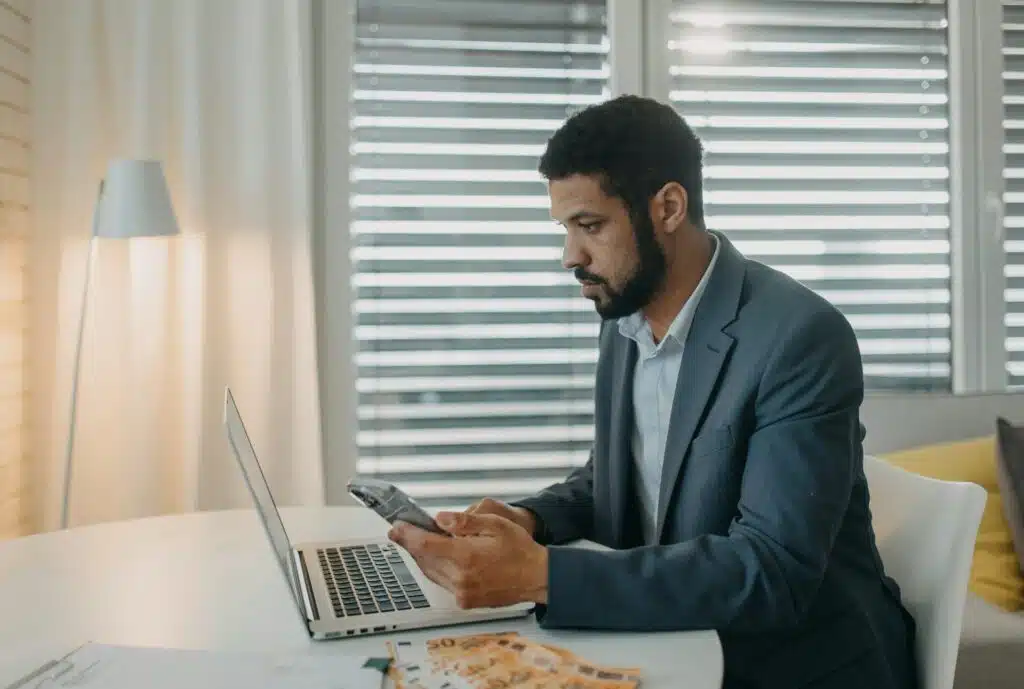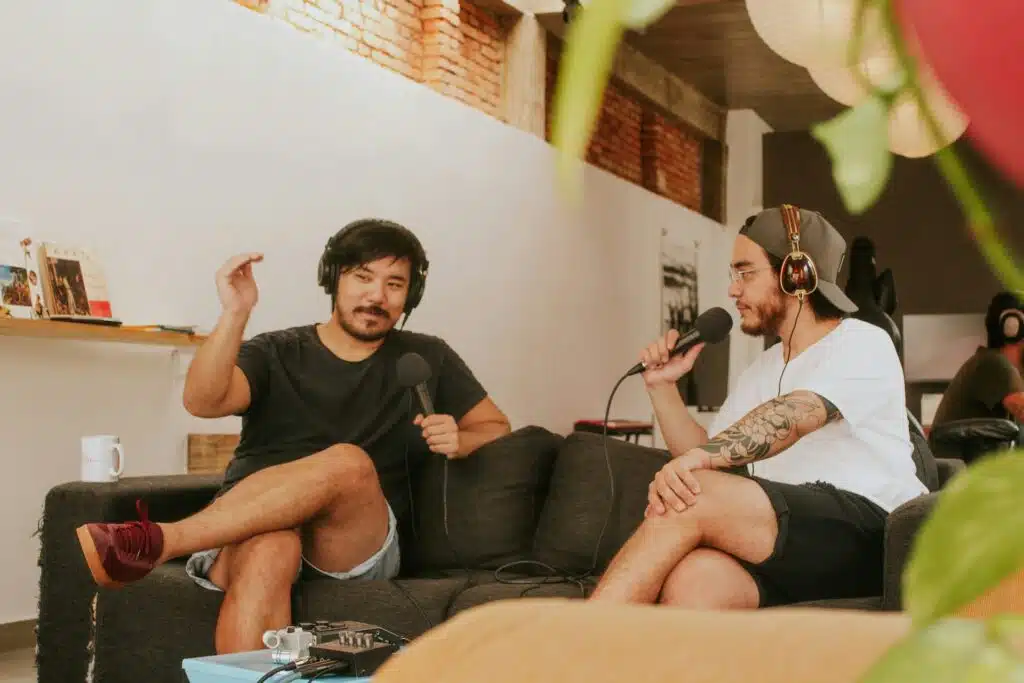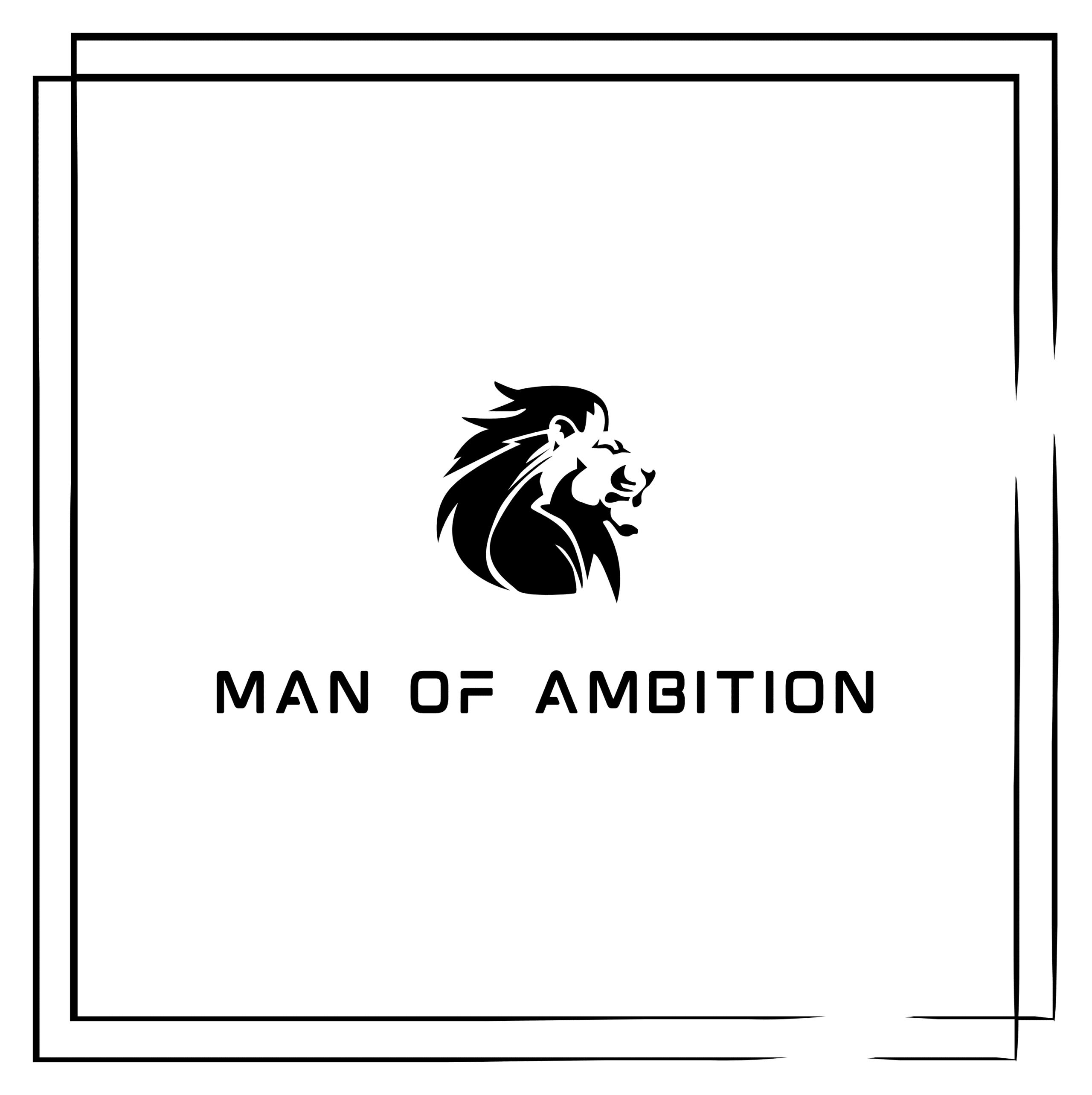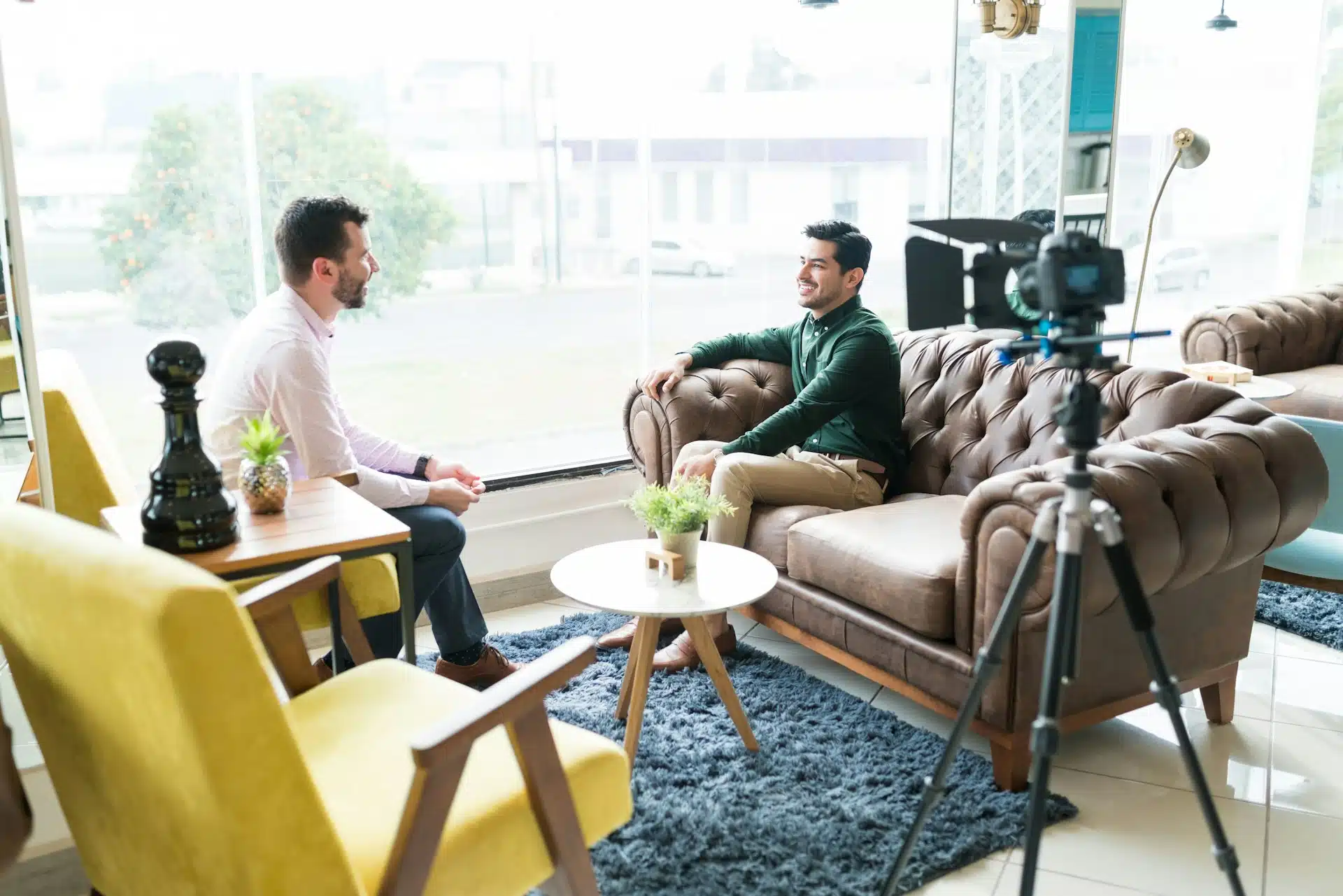They say you never get a second chance to make a first impression, and nowhere is this truer than in a job interview. Your attire can set the tone before you even shake hands, conveying who you are and how seriously you’re taking the opportunity.
But how do you choose the perfect look that blends professionalism with a touch of personal style? Neutral colors like navy or charcoal project authority without overpowering, creating an image of reliability.
The suit should be an extension of one’s professional capabilities. In this guide, we’ll explore the essentials of interview attire for men, helping you enter the room with confidence and style that speaks volumes.
Understanding the Importance of Proper Interview Attire for Men
For men, the ability to dress appropriately for an interview can significantly influence the hiring manager’s perception. Dressing appropriately signals respect for the interviewer and demonstrates an understanding of professional standards. It’s essential to recognize that proper attire is a crucial component of non-verbal communication in an interview setting.
First Impressions Last: The Impact of Your Outfit
A crisp button-down shirt paired with a matching suit jacket lays the foundation for a lasting first impression. The synergy of these elements conveys a sense of meticulousness and formality that can sway the interviewer’s initial judgment.
When done right, this visual cue can be as compelling as a firm handshake or direct eye contact in setting a professional tone from the outset.
Dress Code Research: Aligning With Company Culture
Adapting to the company culture is pivotal when selecting an interview outfit. Whether the environment demands smart casual or formal dress, understanding the nuances of corporate environments can be the difference between blending in and standing out. Researching the company’s dress code in advance ensures that your attire aligns with their values and expectations.

Crafting a Professional Ensemble: Key Components for Men
Assembling professional attire requires a thoughtful combination of pieces that reflect competence and sophistication. It’s the cornerstone of interview preparation for men.
The Essential Suit: Color, Fit, and Style Recommendations
A three-piece suit offers versatility. You can mix and match pants and jackets with different shirts and ties to create multiple looks. While olive green may stand out, reserving such colors for less formal occasions is best.
Why a Navy or Charcoal Suit is a Safe Bet
A navy or charcoal suit is synonymous with a professional appearance for a formal interview. These hues are universally accepted as business-appropriate and offer a canvas for self-expression through accessories. The right color suit can subtly underscore an individual’s seriousness about the job opportunity.
The Importance of Tailoring: Achieving the Perfect Fit
Achieving the perfect fit through tailoring is non-negotiable for interview attire. A fit suit enhances posture and comfort, allowing the wearer to focus on the interview rather than adjusting ill-fitting garments.
Tailoring is an investment in one’s image, ensuring the suit complements the professional presentation.
Business Casual Alternatives: When a Suit Isn’t Required
In a casual setting, the line between formal and casual can blur. While some dress codes may allow for business casual attire instead of the expectation to wear suits, it’s essential to avoid wearing jeans.
Opt for khaki pants, a polo shirt, or a button-down with dark-coloured trousers. Leather shoes, a silk tie, or a solid color bow tie can elevate casual attire without overstepping into formality.
Combining Button-Down Shirts With Trousers or Chinos
A button-down shirt is versatile and can be elevated with a tie or kept simple in solid colours. When pairing with trousers or chinos, the key is maintaining a balance that leans towards business rather than casual, ensuring the ensemble is appropriate for the setting.
The Role of Sweaters and Textured Blazers
Incorporating sweaters and textured blazers into an interview wardrobe adds depth and character. Opting for neutral colours allows for flexibility and conveys a polished yet approachable image, suitable for various professional settings.
The Base Layer: Selecting the Right Shirt and Undershirt
Selecting a base layer that remains professional while keeping the wearer comfortable is crucial for warmer weather. A light-patterned shirt under a blazer can be paired with or without an undershirt, depending on personal preference and the transparency of the shirt fabric. Tee shirts are generally too casual and should be avoided in most interview scenarios.
Shirt Color Choices and Their Connotations
Choosing the right shirt color can subtly communicate personality and confidence. Each color carries its connotations, and understanding these can help in selecting a hue that aligns with the desired professional image and the context of the interview.
Ensuring a Proper Shirt Fit for a Polished Look
The fit of a shirt is as important as the suit itself. A well-fitted shirt complements the body’s shape and ensures the overall look is tailored and polished. It’s the foundation upon which the rest of the ensemble is built and should not be overlooked.
The Debate Over Wearing an Undershirt
The decision to wear an undershirt is personal and can be influenced by factors such as climate and shirt material. While some argue it adds a layer of professionalism, others prefer the cleaner lines achieved without one. Ultimately, comfort and confidence should guide this choice.
Accessorizing Your Interview Attire
Accessorizing for an interview requires a careful balance; it’s about complementing your ensemble without overshadowing it. Details like ties, shoes, and belts can subtly enhance your professional appearance and demonstrate your attention to detail.
Ties and Their Significance
In the professional world, traditional ties are typically seen as a symbol of professionalism and dedication. Opting for a conservative tie can signify your respect for the prospective role and the company culture.
Choosing the Right Tie Pattern and Length
Wearing a tie can significantly impact your interview attire. The key is to choose a patterned tie that is understated yet elegant, ensuring it doesn’t steal the show. The length of the tie should just reach your belt buckle, and incorporating a tie clip can add a touch of sophistication while keeping the tie in place.
To Tie or Not to Tie: Knowing When It’s Appropriate
Whether to wear a tie to an interview can depend on the industry and company culture. If you’re unsure, it’s best to err on the side of formality. Feeling comfortable and confident in your attire is crucial, as potential employers will note how your clothes reflect your professionalism.
Footwear Matters: Picking the Right Shoes and Socks
The right pair of dress shoes can make a subtle yet powerful statement. Opt for closed-toed shoes in dark-coloured styles, preferably in leather or suede. Ensure the shoe’s style matches your outfit to maintain a cohesive look.
Shoe Color Guidelines and Style Considerations
When wearing a tie and selecting shoes, consider the color of your suit or blazer. A gray suit pairs well with black or brown shoes, and it’s essential that your shoe color matches your belt for a polished appearance.
The Sock Dilemma: Color and Pattern Best Practices
Choosing socks for an interview requires thought; the color of your pants should guide your choice. A rule of thumb is to match your socks to your pants, creating a seamless look and not drawing undue attention to your ankles.
Final Touches: Belts, Watches, and Other Accessories
Final accessories should not distract the interviewer but rather enhance your professional look. A slim messenger bag or briefcase in a neutral colour is ideal for carrying application materials, while cuff links can add a touch of elegance without being too flashy.
The Importance of Coordinating Belts With Shoes
Coordinating your belt with your dress shoes is an unwritten rule of professional attire. Closed-toed shoes in dark-coloured styles, made from leather or suede, demand a belt that complements and completes the look.
Accessory Overload: Keeping It Simple and Professional
Less is more when it comes to professional attire accessories. Overloading on extras can distract from your qualifications and the conversation at hand. Choose a few key pieces that demonstrate your style without overwhelming your overall presentation.

Dressing for Specific Interview Scenarios
Different interview scenarios may call for specific attire adjustments. Whether you’re braving the cold of winter or preparing for a tech-savvy video interview, it’s important to dress appropriately for the occasion.
Navigating Seasonal Challenges: Winter Interview Attire
In winter, the key is to wear layers for an interview that can be easily removed without compromising your polished look. Choose a warm overcoat that complements your suit, and remember to maintain a balance between staying warm and looking professional.
Technological Considerations: Attire for Video Interviews
For video interviews, it’s crucial to dress as professionally as you would in person, ensuring your attire is not distracting on camera. Solid colors work best on screen, and you should still consider wearing a tie to convey formality.
The Do’s and Don’ts of Interview Grooming
Grooming is an essential aspect of your interview preparation. From hair to nails, maintaining a neat appearance can significantly influence your impression on potential employers.
Personal Hygiene Best Practices
Personal hygiene cannot be overstated in interviews. Ensure you are well-groomed, with clean nails, styled hair, and subtle fragrance, if any, to convey attention to detail and respect for the interview process.
The Cologne Question: To Wear or Not to Wear
Men should tread cautiously when deciding whether to wear cologne to an interview. It’s essential to remember that some people may have sensitivities or allergies to strong scents.
The goal is to come across as polished and professional, not overwhelming. If a man chooses to wear cologne, it should be applied sparingly to ensure the scent is subtle.
A good rule of thumb is that cologne should only be noticeable once someone steps into a handshake distance. This approach helps maintain a professional atmosphere and respect for the interviewer’s personal space.
Hair, Facial Hair, and Nails: Neatness Counts
Maintaining a groomed appearance is crucial for interviews, as it reflects attention to detail and professionalism. Hair should be styled neatly, and facial hair, if present, must be well-trimmed or shaven.
Nails, often overlooked, should be cleaned and trimmed. These aspects contribute to the overall first impression, showcasing that a candidate is meticulous and well-prepared for the opportunity.
Carrying Your Essentials: Selecting the Right Bag
The bag a man chooses to bring to an interview should be as professional as his attire. A leather laptop case or a sleek briefcase not only carries essentials but also complements the outfit, reflecting an organized and polished image.
Briefcases and Laptop Cases: Professionalism on the Go
A leather laptop case exudes professionalism and sophistication for carrying documents and electronic devices.
Color Coordination: Matching Your Bag with Your Outfit
When selecting a bag, consider its harmony with the rest of the attire. If wearing brown shoes, choose a bag in a similar shade. This coordination extends to the suit jacket, ensuring a cohesive and thought-out appearance.
Post-Interview Etiquette and Attire Care
After an interview, maintaining the integrity of your attire is key for future opportunities. Proper care ensures longevity and readiness for the next call.
Suit Maintenance: Keeping Your Interview Outfit in Prime Condition
Investing time in suit maintenance is a smart move for any professional. This includes proper storage, regular dry-cleaning, and prompt repairs, ensuring that clothing items like the shirt and tie remain impeccable.
Adhering to interview dress code guidelines for the interview can be less stressful when planning and preparing are part of the routine, keeping a person interviewing ready at all times.
After the Interview: When to Unbutton and Remove Your Jacket
Post-interview, it’s generally acceptable to unbutton and remove your jacket once you’ve left the building or are in private. However, maintaining a composed demeanor until you’re well away from the interview location is advisable, as impressions can still be made post-interview.
Reflections on Men’s Interview Attire: Setting Yourself Up for Success
Choosing the right interview attire is a strategic decision that can influence the trajectory of one’s career. It’s an opportunity to present oneself as the ideal candidate, both competent and detail-oriented.
The Psychology Behind Interview Dressing
The attire chosen for an interview can significantly impact a candidate’s confidence and the perception of others. Dressing well can lead to a more commanding presence and a positive self-assessment, which may influence the interview’s outcome.
Learning from Experience: Why the Right Outfit Matters
Experience teaches that the right outfit can make a memorable first impression, opening doors and setting the stage for a successful interview.

Tailoring Your Interview Attire to the Job You Want
Aligning your interview attire with the position you aim for can demonstrate foresight, suitability, and a clear understanding of the company culture. If you’re interviewing for a creative role, like graphic design, a well-fitted blazer with subtle, stylish details can showcase your creativity while keeping it professional.
For more corporate or formal roles, a classic suit in neutral tones with minimal accessories communicates professionalism and reliability. Researching the company’s culture—whether it leans formal, business casual, or creative casual—can help you select an outfit that reflects the industry’s expectations.
By dressing thoughtfully, you show that you’ve already envisioned yourself as part of their team, making it easier for them to do the same.
Strategies for Making a Memorable Impression
To truly make a memorable impression in an interview, it’s important to dress the part and ensure that your overall presentation aligns with the tone of the company and the role.
Beyond being well-dressed, exude confidence through your posture and body language. A firm handshake, good eye contact, and an engaged demeanor can convey professionalism and self-assuredness.
Additionally, consider tailoring your outfit to fit the company’s culture without compromising professionalism. For example, a pop of color or a casual jacket may work if the company has a more relaxed or creative atmosphere. At the same time, a more traditional business setting will appreciate classic cuts and neutral colors.
Subtle attention to detail, like having a clean, neat appearance and ensuring your clothes fit properly, can significantly signal that you take the opportunity seriously.
A memorable impression is made when your attire, demeanor, and enthusiasm align seamlessly, making you stand out as a candidate who is qualified and in tune with the company’s culture and values.
Customizing Your Resume to Match Your Professional Image
A resume should mirror the professionalism of your attire. Customizing it to align with the job’s requirements and your ensemble presents a cohesive image, reinforcing your candidacy.
Conclusion: Summing Up the Essentials: From Suit to Shoes
If you’re unsure about the dress code, dressing professionally is a safe route to avoid giving the wrong impression. For interview outfits, a suit in a classic color like navy or charcoal is a staple for business professional settings.
Always wear a dress shirt, ideally in a solid color shirt that conveys confidence without distraction. Wear a belt to add polish to your look, and remember, even at tech companies, a sharp appearance can set you apart.
Lastly, ensure your footwear is immaculate and complements your attire; ironing your clothes and shining your shoes should not be overlooked.

